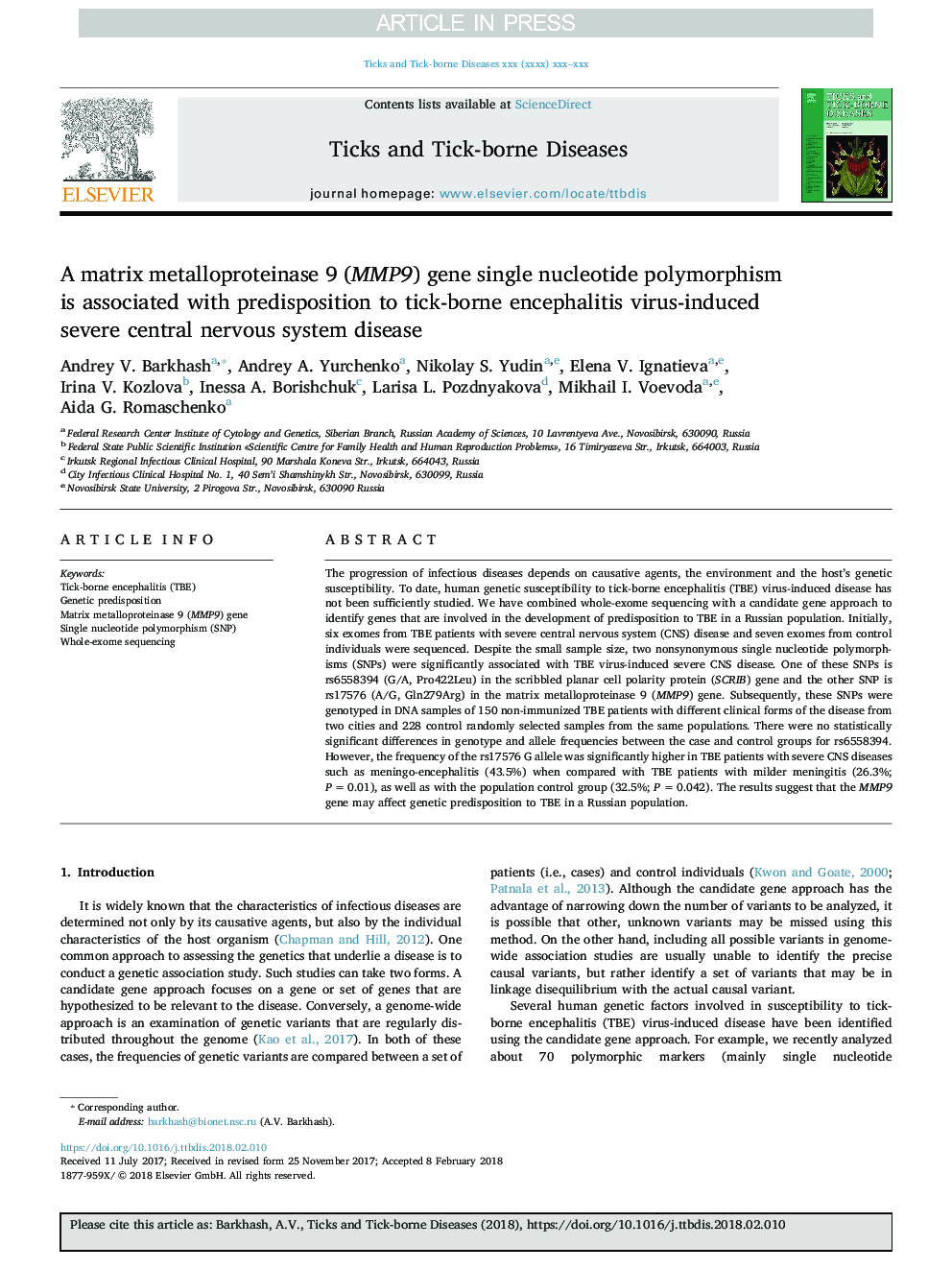| Article ID | Journal | Published Year | Pages | File Type |
|---|---|---|---|---|
| 8507109 | Ticks and Tick-borne Diseases | 2018 | 5 Pages |
Abstract
The progression of infectious diseases depends on causative agents, the environment and the host's genetic susceptibility. To date, human genetic susceptibility to tick-borne encephalitis (TBE) virus-induced disease has not been sufficiently studied. We have combined whole-exome sequencing with a candidate gene approach to identify genes that are involved in the development of predisposition to TBE in a Russian population. Initially, six exomes from TBE patients with severe central nervous system (CNS) disease and seven exomes from control individuals were sequenced. Despite the small sample size, two nonsynonymous single nucleotide polymorphisms (SNPs) were significantly associated with TBE virus-induced severe CNS disease. One of these SNPs is rs6558394 (G/A, Pro422Leu) in the scribbled planar cell polarity protein (SCRIB) gene and the other SNP is rs17576 (A/G, Gln279Arg) in the matrix metalloproteinase 9 (MMP9) gene. Subsequently, these SNPs were genotyped in DNA samples of 150 non-immunized TBE patients with different clinical forms of the disease from two cities and 228 control randomly selected samples from the same populations. There were no statistically significant differences in genotype and allele frequencies between the case and control groups for rs6558394. However, the frequency of the rs17576 G allele was significantly higher in TBE patients with severe CNS diseases such as meningo-encephalitis (43.5%) when compared with TBE patients with milder meningitis (26.3%; Pâ¯=â¯0.01), as well as with the population control group (32.5%; Pâ¯=â¯0.042). The results suggest that the MMP9 gene may affect genetic predisposition to TBE in a Russian population.
Keywords
Related Topics
Life Sciences
Agricultural and Biological Sciences
Animal Science and Zoology
Authors
Andrey V. Barkhash, Andrey A. Yurchenko, Nikolay S. Yudin, Elena V. Ignatieva, Irina V. Kozlova, Inessa A. Borishchuk, Larisa L. Pozdnyakova, Mikhail I. Voevoda, Aida G. Romaschenko,
